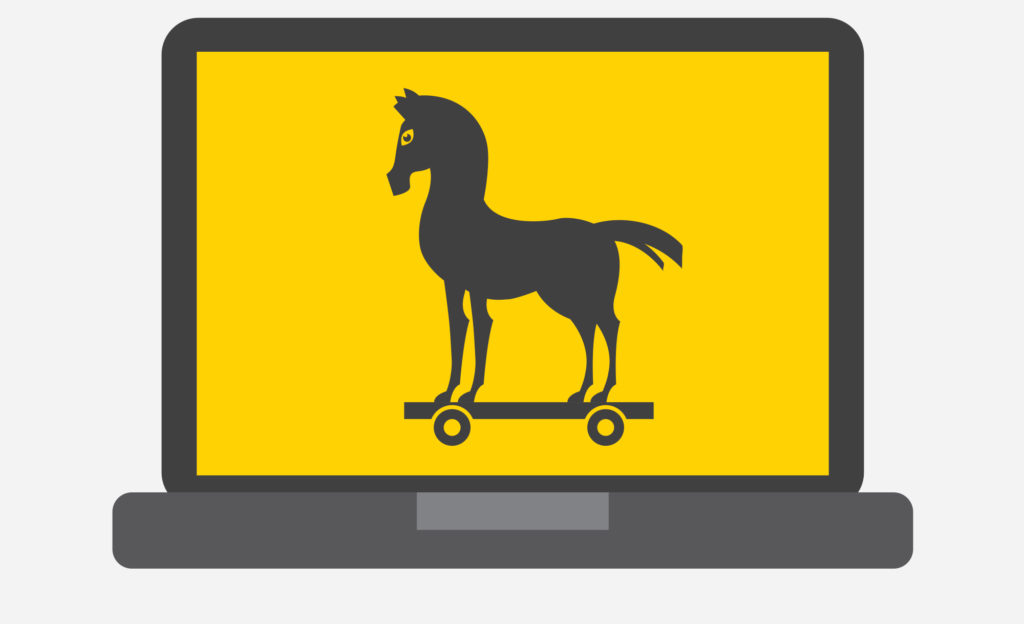When you think about what influences culture, what comes to mind? Do you think about content, video, audio, pictures, executive memos, value statements, ethics, and posters? I bet software didn’t make the list. And yet software is prolific throughout virtually every organization. It’s where most of us spend our workdays. It’s on every screen and shaping your work culture.
Your organization or team may be distributed geographically across offices and in many cases include remote workers. Building and nurturing the high performance work culture you want is harder than ever. The unifying element is often the software you use to communicate, collaborate and work. It brings everyone together and defines the workplace these days. And it can be acting right now as a trojan horse in your business. I’m not talking about industrial espionage or a virus – I’m talking about the software you bring into use, and that it may be taking over your culture.
The tools of today’s workforce are far more complex than those of previous eras. They come with added context, methods, and philosophies. Some of these tools may better align with your competitors’ culture, and inspire your team’s talent to connect with it elsewhere. Even worse, you may be receiving an unknown positive benefit or performance impact from a cultural shift caused by some great software. And you may be giving credit and increasing resources to a separate initiative that’s actually working against you. One thing is certain, if your organization’s soft infrastructure (i.e., the main dashboards for daily work) are created by third parties, those third parties have a huge amount of influence over your culture. How does this happen? Under whose watch? What do you do about it?
For many modern businesses, software is at the core of the experience for your workers. And when it comes to culture building, it’s often neglected. If your organization is like many, the collective perception of the organization is of this “hard or solid thing.” But for many, the primary environment that most influences our behavior, is soft. It is digital. It shouldn’t come as a surprise, but it’s been a very gradual shift for us all. Your culture happens on and off the screen. The more screen time your workers have, the more important the environment’s role is in shaping your culture. And the younger your team, the more influenced they are by it.

The experience we have with our work software shapes our perception of our work, and our company. It also influences our mood, our attitude, our decisions, and the way we make those decisions (the engine of thought). The type, quality, and even brand of the tools provided to your workforce says something about the culture of your organization. Is it the cheapest? Is it also the worst? Is it the best? Does it reflect an investment and reinforce the belief in the power and capabilities of the team? Do the choices in software reflect the values of the organization? Does the soft infrastructure of the organization align with the hard infrastructure?
These questions are asked and answered in the blink of an eye. And if there’s an inconsistency or lack of alignment, how is that reported? Who is it reported to? And will anything be done? The reality is, the employees who notice, may talk amongst peers, but typically don’t have anyone they can turn to without fear of reprisals, to discuss such observations. Thus, this behaviour reinforces a duplicitous culture; the one we talk about, the one we show through behavior and choice, and the secret underground in between. This affects the performance and expense of many an organization but has been written off as the cost of doing business. In the realm of software, this manifests in a complete lack of consideration of culture when it comes to choosing the suite of tools for the workforce.
Perhaps a way to frame the cultural and software conversation is to bring them under the umbrella of the soft-infrastructure of the organization. The softer side of business, or soft infrastructure, not only includes the mental and emotional digital bits and bytes, but it deals in the experiential – what your teams see, sense and feel as they work. These experiences shape and largely determine the true culture of the organization, beyond the motivational posters.
Software as a… Trojan Horse For Culture?

Forget about spyware and ransomware for a moment. There are many opportunities in software and especially the Software as a Service (SaaS) model for outside service providers to set the tone of the work environment, and thus set the tone of your culture. This happens by default when you first select software for your organization, and you must be vigilant and discerning with your choices. There’s an ongoing challenge created by shifts in the software, the service, and the provider’s business model as well.
Since software is often a service these days, updates and changes occur often. Sometimes, there’s a conversation or two, as to if, who and how those updates are rolled out. It’s most often done at a technical level with very little regard for alignment or impact on the culture, which by the way, is the engine of performance of the entire organization. It’s very likely that updates are rolled out with very little oversight. Yet even changes in the experience and design of the software can impact user attitudes, and introduce new ways of thinking and working. This isn’t necessarily a good thing, especially if you are already committed to a certain philosophy or methodology of work.
A change in software is akin to a change in the majority of the modern workspace. It can challenge or undermine the methodology and philosophy of the leadership team. It can also go against a company’s culture by encouraging practices that may appear to give a slight performance bump, but in reality deteriorate the work product or end product. Imagine still, you make a tool switch that doesn’t bode well with your team. They may be so attached, that they seek to work elsewhere that embraces their preferred tools.
How This Plays Out
Here’s a common example of how this plays out in customer service and support departments. The CRM tools designed to manage the customer relationship looks at all the data and the client surveys, and focuses exclusively on the desire to drive down call times. So imagine this, one day, you’re working in the service and support workspace, and on your screen, you see a countdown a timer in simple text, counting down from some optimum number to keep call times low. You also notice an employee score with an emoji (smiley faces on your phone) letting you know how you’re doing this month.
Later in the day you attend a conference with your manager that announces the launch of an initiative to focus more on using support calls to upsell customers into other product lines and premium levels of support. This initiative will also theoretically increase customer satisfaction to emphasize the quality of the latest rebranding effort. Your manager tells you about how the company will be emphasizing the upsell and tracking the remarketing efforts for your customers you interact with over time, as you move forward.
The very next day you show up for work, and you notice some updates have been added to your interface. You see a pulsating countdown timer, with a red background, white text. As it counts down, the pulsing and the color of red gets more intense. Below that area of the screen, where you’re happy emoji and monthly score once stood, is an image of what is to symbolize your boss’s face. And as the timer counts down, the facial expression goes from happy, to neutral, to sad, to perturbed to angry and so on. Below that on your screen, is your classic, emoji score, only this time, your smiley face and status bar decrease as time moves on. This raises your blood pressure and you do your best to close the calls as quickly as possible. Nowhere on the screen is the spot to augment this system for upsells, or the customer’s happiness with the call.
How would you behave in this scenario? Which would have a greater pull on your attention – the visual cues on the screen, or the initiatives laid out during the meetings? If you were a low level employee, would you report it? Would your manager report it? Would your IT guy report it? Probably not.
When it comes to building, fostering and reinforcing an intentional culture, most organizations are sending the fewest and weakest signals to the environments that have the most influence and impact. This is where their teams spend the most time; in the software on the screen.
So what do you do? Here are 3 ideas to help you on your quest to build and refine your high performance culture.
- Formalize your culture if you haven’t already. Go through the process of crafting a robust Declaration of Culture (DoC). This is a project. The DoC is a project (beyond a document) that publishes, the values and valued behaviors that you believe are important to the success of your organization. These need to be known, absorbed and translated into requirements of the experience design for all aspects and departments of your business. This goes beyond setting up the moral compass, and lends itself to being the pace, tone, and treasure map for the organization. This process is becoming far more strategic than the pithy management memos and value statements of yesteryear.
- Bring design thinking, and specifically experience design, into your organization. You need an experience designer on your team, whether in-house or as an outside consultant. Without experience in a method or process, you have no frame of reference to raise the bar, to strategically develop culture building initiatives that are reinforced in the regular daily experience of your teams. This person or team should be familiar with design thinking, business management concepts, behavioral economics, and a slew of new media skills to actually design and implement solutions.
- Find a trusted, passionate team member with high capacity and multidisciplinary capabilities, Chief Cultural Officer, or Chief Experience Officer (CXO) and have them work throughout the organization to ensure cultural alignment. This includes working with the CTO and other managers who are in charge of developing internal touch points, and work environments.
- Review your company’s screen time and environments. Identify and prioritize the environments (screens and spaces) where teams interact the most, and taking a critical and deep look at how well they align with the values and valued behaviors of your culture. Brainstorm new ways to bring more of your culture to life on the screens where and when it counts.
- Refine the values, and valued behaviors that make up your company culture. Nine times out of ten, 95% of the time in culture consults, organizational culture does not reflect strategic management/strategic brand best practices. They are out of alignment, most often because they were created separately by different teams and leaders who were not thinking of operational and cultural integrity of the whole. Holistic thinking of this kind is the cutting edge of the modern management skillset.




0 Comments